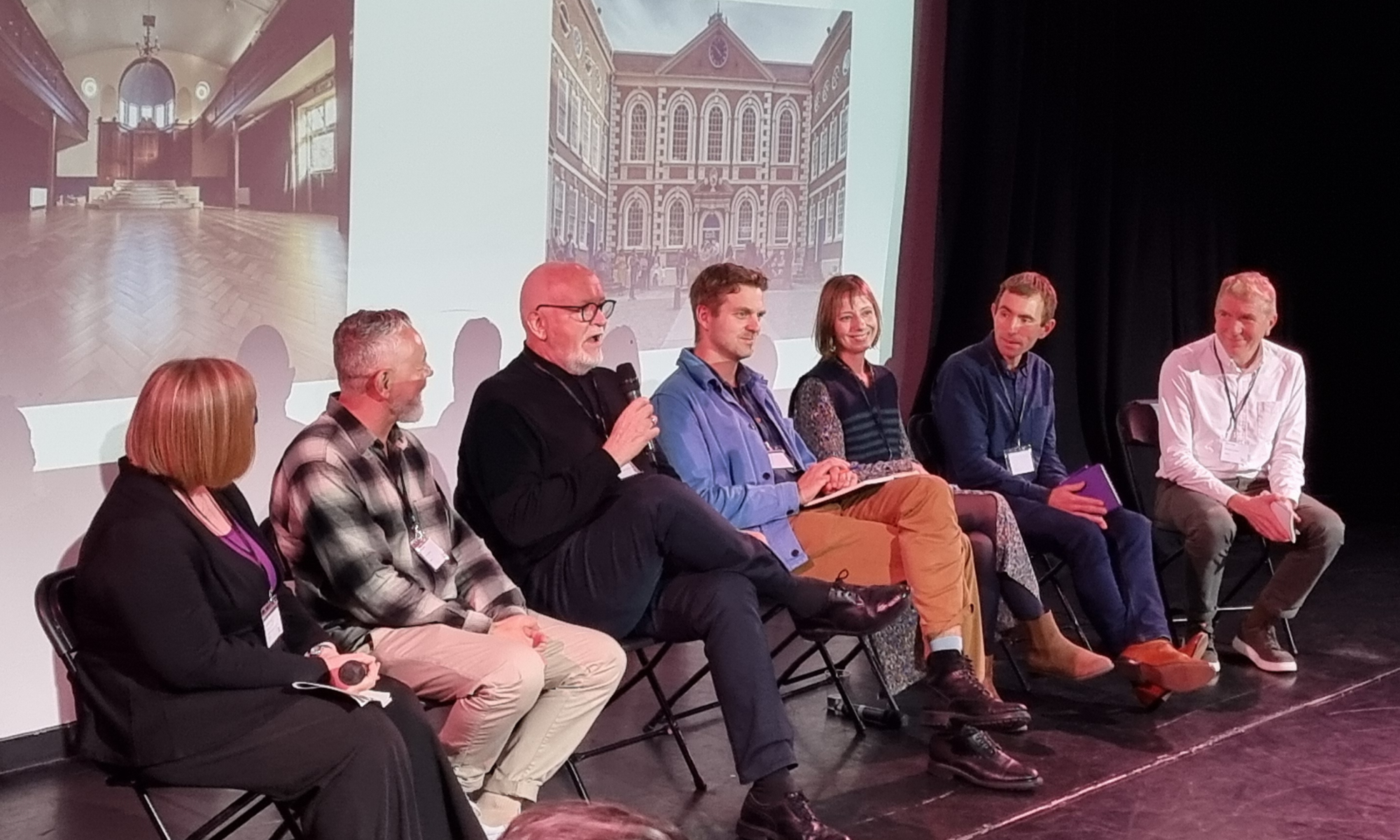Building for the Future: Reflections on Our October Members’ Meeting

Earlier this month, more than 80 Future Arts Centres members came together at Rich Mix in London for a day focused on one of the sector’s biggest and most complex challenges – capital and building development.
For many of us, our buildings are our biggest assets and our biggest headaches. They’re where our communities gather, where art happens, where relationships take root – but they’re also aging, expensive, and increasingly difficult to adapt to new expectations around access, environmental performance and digital capability. The day was about facing those realities head-on, sharing learning, and shaping what kind of advocacy and support FAC can offer next.
The case for capital
The session built on FAC’s recent report with Arup, which mapped the scale and urgency of the capital challenge facing the UK’s arts centres. As our sector continues to deliver extraordinary social and economic value – from wellbeing and education to regeneration – the need for investment in the buildings that make it possible has never been clearer.
Co-Directors Annabel Turpin and Gavin Barlow opened the meeting by reminding us that this was a space for peers to think strategically, not just about a one-off capital project, but about the ongoing work required to keep our existing places viable, safe and fit for the future.
The fundraising landscape
The first panel took a wide-angle view of the fundraising climate. Chaired by Dave Moutrey (Manchester City Council), the discussion brought together Tonya Nelson (Arts Council England), Caroline McCormick (Achates) and Zoe Crick-Tucker (Theatr Clwyd).
Zoe shared the journey behind Theatr Clwyd’s £50m rebuild — a reminder that long-term partnership working, persistence and creative thinking pay off. “It’s a marathon, not a sprint,” she said, describing how everything from environmental planning to a high-end restaurant offer had played a part in building the case and securing broad-based investment.
Tonya offered insight into Arts Council England’s current priorities: the need for solid data to make the case for cultural infrastructure at a national level. FAC’s capital research, she noted, is a key part of that evidence base.
Caroline, from Achates, provided a dose of realism about the changing philanthropic landscape. Opportunities exist, but they’re relationship-driven and require organisations to position themselves confidently as civic partners.
Making the case
Members then explore ‘making the case’ in small groups – exploring who we need to convince, how to evidence need, and how to measure return on investment, whether financial, social or environmental.
The discussion was rich and practical. Many reflected on the importance of storytelling alongside data, and the need to frame arguments differently depending on the audience – from local authorities and funders to communities and politicians.
Common threads included:
· Starting with environmental and access audits to anchor your case in social impact
· Using partnerships with universities or local strategies to back up evidence
· Demonstrating value through both numbers and narratives — from energy savings to community stories
· Setting up systems early to capture impact data consistently
Scenarios from the field
The afternoon turned to practical examples, with Simon Erridge (Bennetts Associates), Tom Clarke (Theatres Trust) and Ian Stickland (Charcoalblue) joining the panel. Together, they explored three real-world scenarios:
· Repair – tackling failing infrastructure in heritage or municipal buildings
· Expand – meeting demand that outstrips capacity
· Enhance – modernising to improve access, digital capability and sustainability
Each scenario resonated. For some, the challenge is survival — patching roofs and boilers. For others, it’s about future-proofing and ensuring our buildings can serve communities for the next generation.
Breakout groups delved into the details: how to position a repair as an investment in civic infrastructure, why it might be better to enhance before you expand, and how to build flexibility into every design decision. As one participant put it, “we can’t second-guess the future, but we can design for change.”
What members took away
Feedback from the day was overwhelmingly positive. Members valued the honesty and generosity of the conversation – and the reassurance of shared experience. As one attendee wrote in their evaluation:
“It was brilliant to be in a room of people facing the same challenges and pooling knowledge, rather than competing for it.”
Others highlighted practical takeaways – from understanding planning processes and cost modelling to the importance of internal alignment between artistic vision and capital strategy.
The day also reinforced a wider truth: that arts centres aren’t just venues, they’re part of the civic fabric. Investing in them is investing in community wellbeing, creative opportunity, and local pride.
FAC’s next steps
Future Arts Centres exists to amplify that message – to advocate for the importance of maintaining and renewing the spaces that sustain cultural life across the UK. The conversations at Rich Mix will directly inform our ongoing dialogue with funders and policymakers, as well as our future peer-learning sessions.
Capital projects can be daunting, but they’re also acts of optimism. As we look ahead, FAC will continue to support members to build – and rebuild – with purpose, creativity and confidence.